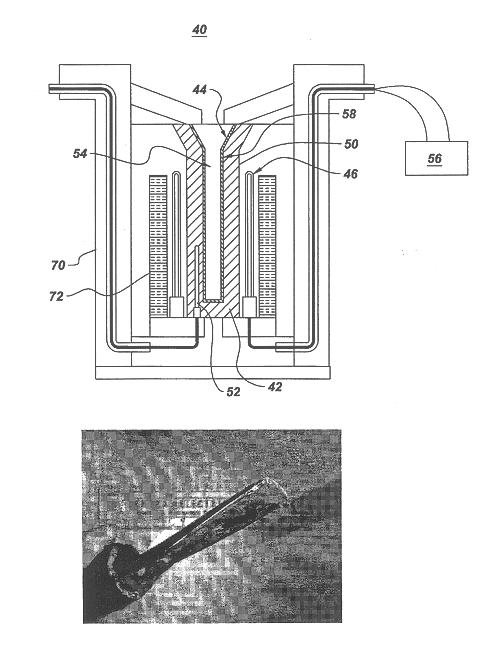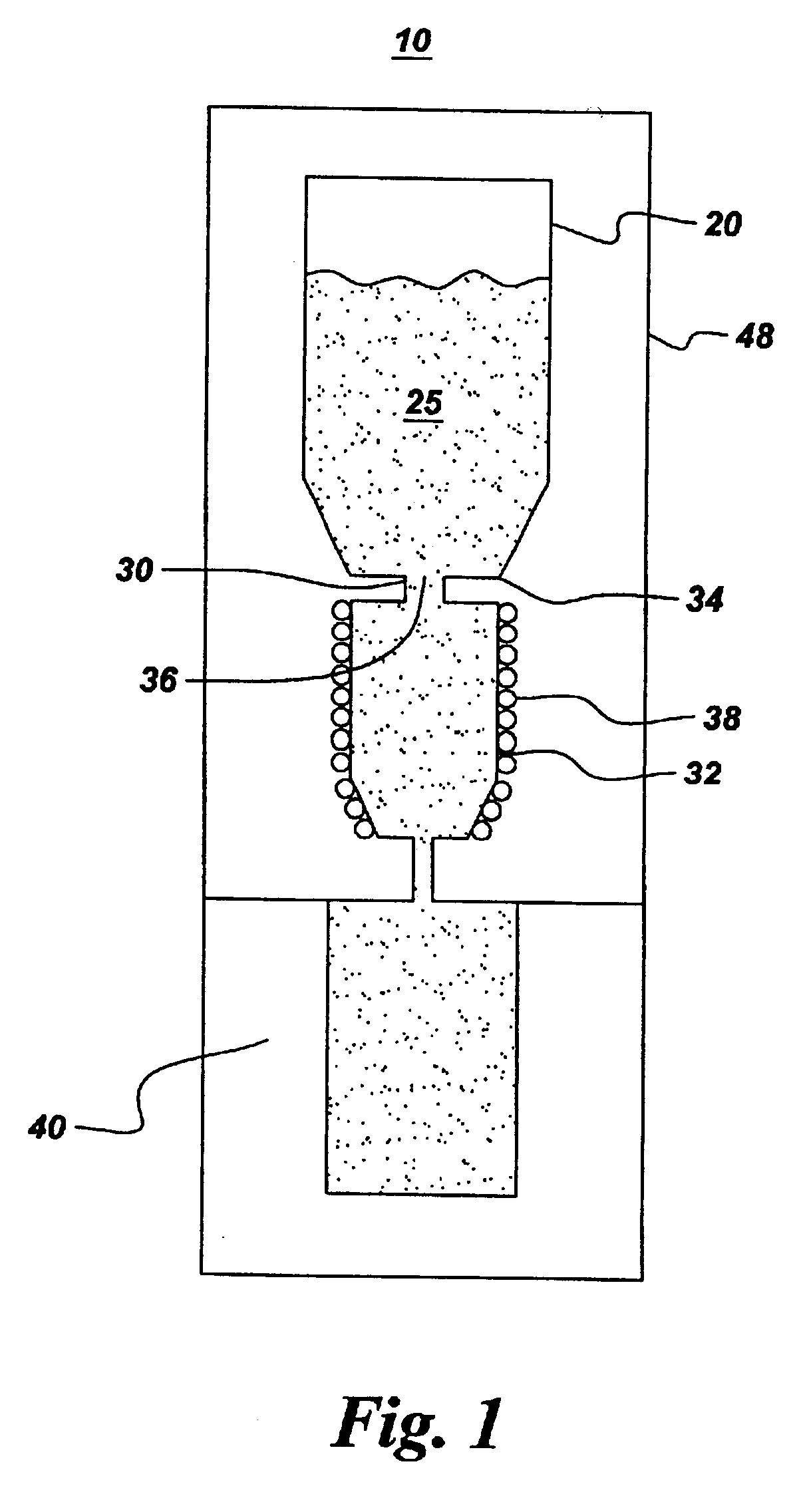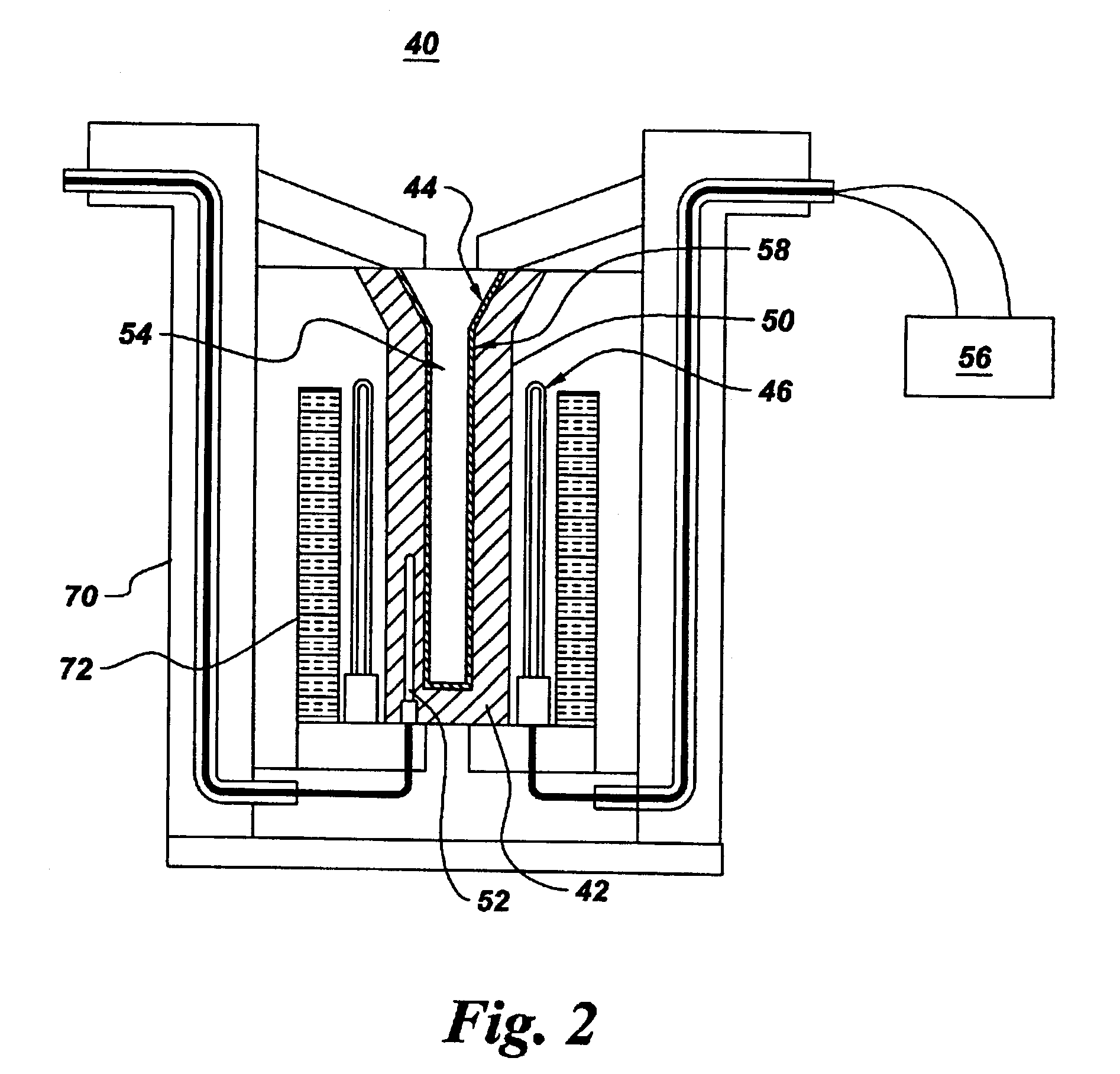Method and apparatus for casting near-net shape articles
a technology of near-net shape and casting method, which is applied in the direction of wind motors with parallel air flow, wind motors with perpendicular air flow, foundry moulds, etc., can solve the problems of only operating at temperatures, and the processing of materials such as near-net shapes, which remains a significant technical challenge, so as to reduce the risk of localized premature solidification and enhance the performance of mold assembly
- Summary
- Abstract
- Description
- Claims
- Application Information
AI Technical Summary
Benefits of technology
Problems solved by technology
Method used
Image
Examples
example 2
An airfoil having the composition of 50 atomic percent Nb, 23 atomic percent Ti, 2 atomic percent Hf, 16 atomic percent Si, 1.5 atomic percent Ge, 4 atomic percent Cr, 3 atomic percent Al, and 1 atomic percent Sn was cast using the apparatus of the present invention. The mold assembly used to cast the airfoil comprised an alumina mold, or shell, and a zircon facecoat. The mold was preheated to a temperature of about 1300.degree. C. The cast airfoil is shown in FIGS. 5a, 5b, and 5c. This result demonstrates that Nb--Si based composite materials can be investment cast into different near-net-shape articles, including airfoils, using the apparatus and methods of the present invention.
PUM
| Property | Measurement | Unit |
|---|---|---|
| melting temperature | aaaaa | aaaaa |
| thickness | aaaaa | aaaaa |
| thickness | aaaaa | aaaaa |
Abstract
Description
Claims
Application Information
 Login to View More
Login to View More - R&D
- Intellectual Property
- Life Sciences
- Materials
- Tech Scout
- Unparalleled Data Quality
- Higher Quality Content
- 60% Fewer Hallucinations
Browse by: Latest US Patents, China's latest patents, Technical Efficacy Thesaurus, Application Domain, Technology Topic, Popular Technical Reports.
© 2025 PatSnap. All rights reserved.Legal|Privacy policy|Modern Slavery Act Transparency Statement|Sitemap|About US| Contact US: help@patsnap.com



